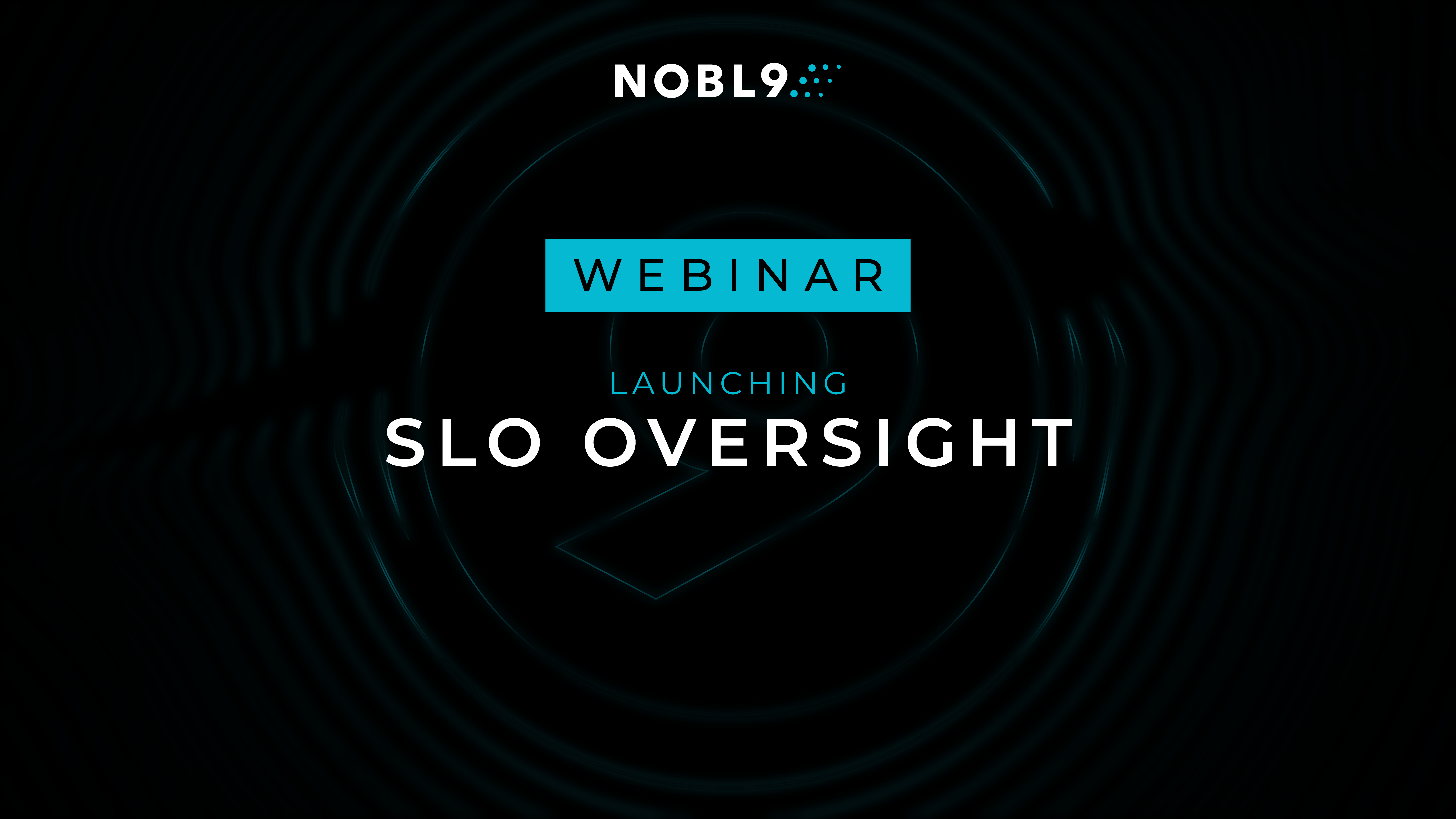More by Jaypal "JP" Sethi:
Nobl9 is now available on Google Cloud and GCP Marketplace Introducing the Nobl9 Delivery Network| Author: Jaypal "JP" Sethi
Avg. reading time: 2 minutes
Traction control in a modern car lets you drive more confidently. You can go faster while changing direction in response to unforeseen obstacles. Traction control monitors the rotational speed of all four wheels and applies brakes to individual wheels when one wheel starts to slip or lose traction. When a car accelerates through a turn, traction control is activated. The vehicle becomes stable by distributing power across all four tires and reducing wheel spin.
Similarly, when spinning your wheels moving workloads to – or across – clouds, you need to know when to apply the brakes and when to keep moving forward.
What are SLOs?
SLOs are a methodology for measuring the performance and reliability of your services. They define a measurable target for the level of service provided to users. For example, you could set an SLO at a 99% success rate for a particular service. This goal means the service should be successful 99% of the time over a certain period, and 1% of error is acceptable to users, most likely because they (or the system) will retry in the case of a failure. SLOs help IT teams and business stakeholders set expectations, measure success, and improve reliability.
How SLOs de-risk cloud migration
Moving to the cloud can be a risky endeavor if not appropriately planned. However, by setting SLOs for each service, teams can ensure that the measured services operate within defined parameters as they move from one platform to another. By monitoring SLOs before, during, and after the migration, teams can systematically ensure that the service is running as expected and identify any issues that arise during the migration. Comparing results to the baseline allows teams to mitigate risks and adjust their approach to migration if necessary. Having SLOs in place also allows teams to identify and fix any issues that arise post-migration quickly, reducing the impact on end-users.
Why uptime matters when moving between cloud environments
In today's “always on” digital world, there’s never a good time to migrate services between clouds. Cloud-native technology promises to allow migration even during critical periods. Every business needs vital services to keep running, while others can be more flexible.
For example, in e-commerce, a website outage could prevent customers from making purchases; in banking, an unresponsive mobile app could disrupt customers’ ability to check their balances or transfer funds; and in transportation, a system malfunction could prevent customers from booking tickets or checking flight status. In all these cases, downtime can significantly impact customer experience and business revenue.
SLOs for multi-cloud and hybrid cloud environments
Setting SLOs in multi-cloud or hybrid cloud environments can be more complicated as teams may need to account for differences in performance and reliability between cloud providers. However, by setting SLOs for each provider and tracking them over time, teams can identify which provides the best performance and reliability for each service. As a result, your group can make informed decisions about where to run each service, maximizing the benefits of each provider.
SLOs for portability and flexibility
Migrating to the cloud can be risky, but it can also be rewarding with the right tools and approach. By setting SLOs for services, you can ensure that the services are portable and flexible across cloud providers so you can take advantage of each provider's features and financial incentives. SLOs also allow teams to quickly identify differences in performance and reliability between providers, ensuring that the service runs as expected in the new environment.
Accountability for 3rd Party Dependencies
Modernizing and migrating to the cloud will likely alter your use of other third-party services. If (when?) third-party services don’t perform as expected, your services are at risk of downtime. Establishing SLOs for third-party dependencies allows you to avoid reliability threats by keeping 3rd-party services accountable. In addition, now you can apply a data-driven approach to plan future capacity increases as your service grows and increases demand on cloud and other third parties.
Speeding up safely
SLOs can de-risk cloud migration while providing flexibility and portability across cloud providers. By setting and monitoring SLOs throughout the migration process, teams can ensure that services are running as expected and adjust their approach if necessary.
Nobl9 SLO Platform eliminates the guesswork and makes it easy to start and scale SLOs so you can get back to accelerating your business without the risk. Go SLO to go faster.




.png)





.png?width=1200&height=628&name=Building%20Reliable%20E-commerce%20Experiences%20(42).png)
.png?width=1200&height=628&name=Building%20Reliable%20E-commerce%20Experiences%20(34).png)






Do you want to add something? Leave a comment